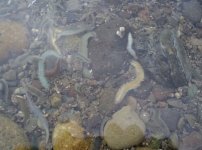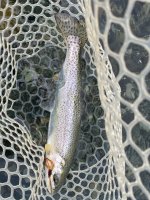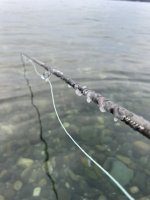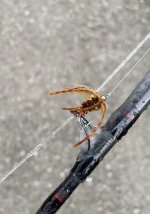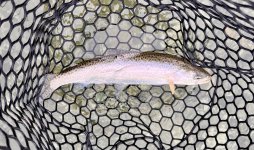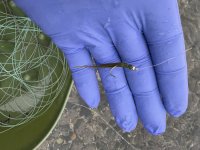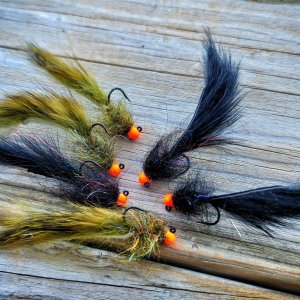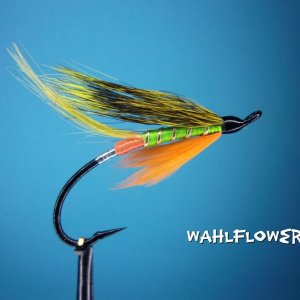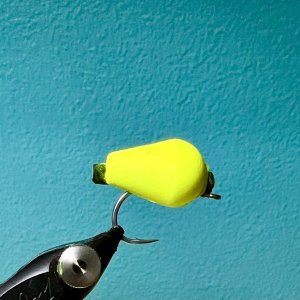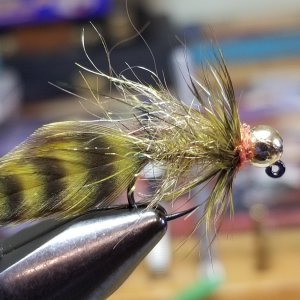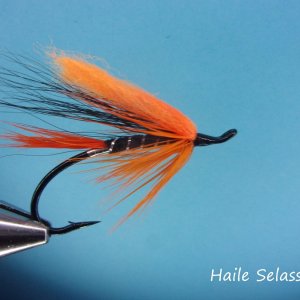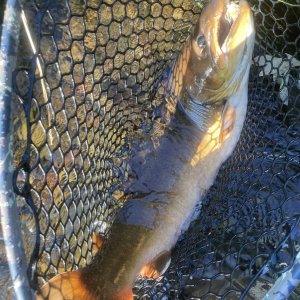January can be tough, but I have found some success this year and in past Januaries on the HC a couple of hours after the highest high of the day throwing patterns that could be taken for polychaetes. It didn’t/doesn’t seem to be any specific pattern, but rather that profile/movement that led to good action. They seemed uninterested in the tiny scuds and the krill patterns I threw (half-hearted grabs), and straight up ignored my favorite sculpin (fish on before and after using it).
It's my inexpert understanding, and if the bios on here know better or can clarify or correct me that'd be great, that polychaetes are fairly prominent in winter and I have heard they hold big breeding orgies during the full moon like we have at the end of the month.
Edit: Looking at the tide chart, it looks like the full moon coincides with some nicely-timed morning highs.
The pile worms do, indeed, gather in numbers on full moons. I witnessed that event once. It was in the late fall. We were fishing a beach I visit regularly, and not much was happening. We had planned to fish into the dark, figuring the full moon might make that productive. Anyway, the sun went down, the moon came up, and the water started boiling all around us. We got quite excited at our prospects and started madly chucking baitfish patterns into the war zone. Couldn't buy a bite. Tried some other patterns. Nothing.
Frustrated, we decided to shine some light in the water and figure out what the fish were chasing so aggressively. There were 6-8" pile worms wriggling all over the place and we saw a nice fish swimming through and striking at them. Looked like a multiple attack affair for a fish to subdue a worm to the point where they could eat it. We picked up a worm to get a good look at it, and those things are creepy! Thet have nasty teeth, which may explain why the fish try to stun or immobilize them before sucking them down.
For a while after that experience, we tried to create fly patterns to "match the hatch." My buddy caught a couple fish on something that was essentially a rabbit strip, twisted and bound by a length of mono with a couple hooks tied on in spots he figured fish might attack, but we never really came up with a worm pattern that was practical to tie, reasonable to cast, and got bit regularly.
Incidentally, I have a conehead bugger pattern that I came up with that has caught me a lot of nice cutts over the years. Nothing special, but the color scheme (olive and wine/Burgundy) was super effective. I have often wondered why that stupid color combo was so effective, and I have decided (right or wrong) that the fish must think it looks like a small pile worm. The colors are certainly right, and if you think about how a conehead bugger fishes (kind of like a jig), the movement is probably about right, too. I could be completely wrong, and they might just think the bugger is a baitfish or any of the other multitude of things a bugger can imitate, but the fact that particular color combo (which doesn't work nearly as well in freshwater) has been so good in the Sound is compelling.
Presentation-wise, I haven't given much thought to the pace or cadence if my retrieve; just usually fish it like I would fish a bugger in most situations (varied strips). The fish don't seem to be too keyed on a specific retrieve; the fly just works.
I think the ultimate pile worm pattern would be a conehead bugger body with a 5-6" rabbit strip instead of a marabou tail. Obviously, it would be hard to cast, and it would probably foul almost constantly, so it would probably be a royal pain to fish. An articulated fly (maybe several woolly bugger bodies strung together?) might work.
Finally, I think it's time someone addressed the elephant in the room here. Those of us who've been at this salty cutt thing a while know this is typically a slow time of year. That said, I have to think a big part of the reason we're all getting skunked so much more is that there are A LOT more of us out there than there were even 5 years ago. As our iconic salmon and steelhead fisheries have begun progressively sliding by the wayside, more and more people looking for a tug have turned to all the things we discuss more often on the forum these days (stuff like bass, muskie, and SRC/resident coho). In the days when I caught a lot of nice cutts in the deep South Sound, it was rare I ever found another angler fishing, and these days, I run into other anglers more often than not. We're all fishing the same (very few) beaches, sharing our favorite fly patterns/presentations, and doing it all more frequently than we used to. That's all good and well, but it's little wonder it's getting more challenging. Seems like the only time I have good fishing anymore is in the fall. I think that has a lot to do with the fact there are fish on their spawning runs swimming with the full-time residents. Those spawners are hungry, aggressive fish that haven't seen a lot of flies and aren't particularly keyed into what prey lives near various beaches. That adds up to fish that are more likely to strike at a variety of typical fare and usually equals success.
Anyway, it appears that if this old dog wants to catch cutts more regularly, he's gonna have to learn a few new tricks. Buying a boat would probably be a solid start....






